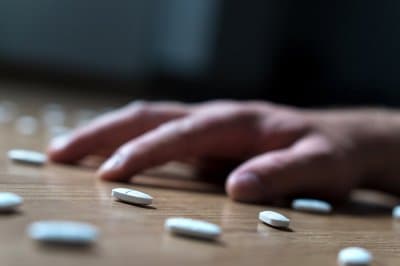Withdrawal Symptoms of Rivaroxaban (Xarelto)
An anticoagulant drug, Xarelto is a prescription medication designed to prevent blood clots from forming by thinning the blood in patients suffering from atrial fibrillation and pulmonary embolism (PE) as well as those recovering from hip or knee replacement surgery. It also helps to prevent and treat deep vein thrombosis (DVT). It is also known by its generic name, rivaroxaban.
Over 20 percent of the American adult population has misused a prescription drug at least once in their lifetime, the National Institute on Drug Abuse(NIDA) publishes, and this kind of misuse might occur with rivaroxaban. If stopped suddenly after a period of consistent use, Xarelto can have dangerous risk factors. Abuse of Xarelto can increase the odds for a negative reaction.
What Happens When You Stop Taking Anticoagulants?
One of the biggest potential issues of stopping an anticoagulant medication, such as Xarelto, after it has been taken for a period of time is the risk for blood clot formation, which can lead to stroke and a lack of oxygen to the brain. Side effects of this can be partial paralysis and even death. The journal Science Nordic warns that stopping a blood-thinning drug suddenly can exponentially raise the risk for a blood clot in the brain, which can often be fatal. Oral anticoagulant drugs are listed as having the biggest drug safety problems in 2016 by the Institute for Safe Medication Practices (ISMP) Quarterwatch Reports for July 2017.
Xarelto needs to be carefully weaned out of the body under the supervision and instruction of a trained medical professional, which can be accomplished through a medical detox program.
Xarelto Withdrawal & Detox Timeline
A typical detox timeline for Xarelto may look like the following:
- Within 12–24 hours of stopping Xarelto: Side effects, such as headache, fatigue, dizziness, lightheadedness, easy bruising, back pain, nausea, heart palpitations, high blood pressure, leg weakness, and dry mouth, can occur. Risk of a blood clot or a stroke is present.
- 1–3 after stopping Xarelto: Emotional disturbances, such as depression, restlessness, anxiety, possible suicidal ideations, sleep difficulties, trouble concentrating, and problems thinking clearly, can become evident. Physical side effects will peak.
- 3–5 days after stopping Xarelto: Side effects of withdrawal will start to wane and gradually dissipate.
- 1 week after stopping Xarelto: The majority of the withdrawal symptoms will dissipate. Emotional issues may potentially linger.
In general, the average duration of detox for Xarelto is between three and five days. There are several factors that can influence both the duration and potential severity of Xarelto withdrawal. A calm, stable, and supportive environment can minimize emotional distress. Biological and genetic influences, including metabolism and family history of drug dependence and addiction, can impact withdrawal.

Xarelto Half Life
Withdrawal symptoms for a medication may begin when the drug stops being active in the bloodstream. According to the prescribing information for rivaroxaban, the half-life of the drug is between five and nine hours for healthy individuals ages 20 to 45. This means that withdrawal symptoms will typically begin within 10 and 18 hours after the last dose.
The mean age of individuals prescribed Xarelto is over 60, according to information published in the Journal of the American Heart Association (JAHA). As people age, their metabolism slows down, and the Xarelto half life is then extended to 11–13 hours for people between the ages of 60 and 76, meaning Xarelto withdrawal would begin within 24 hours of stopping the drug.
Mixing Xarelto and Alcohol
The presence of a co-occurring mental health or medical condition can also complicate Xarelto withdrawal and affect the timeline. If other drugs (recreational or prescription) and/or alcohol are also being taken, there can be added withdrawal concerns and potential risk factors. Abuse of Xarelto increases the odds for a negative reaction during withdrawal and a potentially extended timeline. Someone who has been taking Xarelto in large doses for a long period of time is liable to have more significant withdrawal symptoms that can last longer than a person who hasn’t been taking as much of the drug for as long.
Since the biggest potential complication of Xarelto withdrawal is death, medical detox is the optimal method of treatment.
Medical Detox for Xarelto Withdrawal
A medical detox program offers the highest level and standard of care during Xarelto withdrawal. In a specialized medical detox facility, a person’s vital signs can be constantly monitored to keep an eye on potential cardiovascular issues or potential blood clotting as well as other possible complications.
Co-occurring medical and mental health disorders and conditions can be cared for in an integrated fashion along with the management of withdrawal symptoms during medical detox. Withdrawal symptoms are often managed with medications to minimize their impact.
 Xarelto may be tapered off slowly to reduce the risks associated with stopping the drug “cold turkey.” A Xarelto taper will slowly lower the dosage of the drug in a controlled manner over a period of time to minimize the impact of withdrawal. Xarelto may also be switched out with a different anticoagulant medication during detox to minimize the potential for a blood clot.
Xarelto may be tapered off slowly to reduce the risks associated with stopping the drug “cold turkey.” A Xarelto taper will slowly lower the dosage of the drug in a controlled manner over a period of time to minimize the impact of withdrawal. Xarelto may also be switched out with a different anticoagulant medication during detox to minimize the potential for a blood clot.
Rivaroxaban abuse can cause potential nerve damage, paralysis, and irreversible internal bleeding. There is no FDA-approved antidote for the medication. Some of the damage done by Xarelto abuse may not be completely reversible.
As published in Consumer Safety, close to half of all adverse reactions to rivaroxaban required a stay in a hospital for recovery. The U.S. National Library of Medicine (NLM) PubMed Health publishes that in treatment study groups, around 60 percent of one group and 80 percent of another who were taking rivaroxaban had a negative reaction that required emergency treatment.
Xarelto abuse can also lead to addiction characterized by compulsive drug-taking and drug-seeking behaviors and an inability to stop the drug even when the desire to do so is there. Xarelto addiction can have far-reaching physical, social, and psychological impacts on a person’s life and family.
Addiction is a treatable disease. Behavioral therapies, medication management, and supportive care and treatment often begin with a detox program and progresses to comprehensive treatment. Solid care can help to reverse some of the emotional and interpersonal impacts of the disease.
A medical detox program can ease rivaroxaban withdrawal symptoms and even potentially shorten the timeline of withdrawal. Trying to detox at home without the help of a trained professional can be risky and even possibly life-threatening. Rivaroxaban is a not a drug that should be stopped without professional intervention even when it is being taken as directed.
Abuse of the drug can create even more potential complications during detox and withdrawal. As a result, medical detox is a highly beneficial start to an addiction treatment program. A medical detox program offers constant support, encouragement, and supervision around the clock for an average of 3–5 days in a safe and controlled environment that is free from the stress of everyday life. Medical detox provides a stable location where an individual can heal and stabilize physically as the drug processes out of the body.
After a medical detox program, individuals can move seamlessly into a comprehensive and specialized addiction treatment program that will be designed to maximize a sustained and healthy recovery.
It’s never too late to reach out for help. If you or someone you love is struggling with the devastating side effects of addiction and are unsure of where to turn, call us today at . Oxford Treatment Center, American Addiction Centers’ rehab clinic in Mississippi, is ready to help you get the treatment you need today.